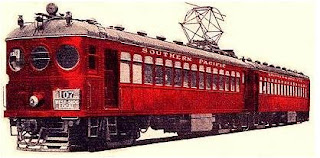Reality Check at Wilson High
A recent student-administered study at our local Wilson High School revealed that teens think their student peers are using more drugs and alcohol than they actually are.
The organization Positive Action Concerning Teens (PACT) is using the study’s results to give teens a reality check and to counter peer pressure.
The results show that Wilson students believe that more than nine out of 10 of their peers consume or have consumed alcohol. The actual number is six out of 10. The results also show that those who do drink, do so far less than is believed.
The study also revealed similar misperceptions about marijuana use.
The June issue of the Southwest Community Connection describes the results in a front page story.
One study's conclusion is that teen social norms — and sense of reality — are askew as it relates to drugs and alcohol. What kids THINK is happening, isn’t.
One thing is missing from the story — and presumably the Wilson study: The answer to the question “Why?”
Why the disconnect between perception and reality?
The question begs for an answer.
Here’s one: The media. How is teen behavior portrayed in the media, which consume roughly eight hours of the average teen’s day?
More exactly, how are teens themselves portrayed in the media? Screens are distorting mirrors. What do teens see when they become immersed in a screen world.
The late George Gerbner conducted a classic study of what heavy TV watchers thought the crime rate was and compared that to what “light” consumers of TV thought the rate was. He called the result “The Mean World Syndrome.” Heavy consumers of TV fare thought the world was a much more dangerous place than it in fact is. Those who used less TV, had a better sense of the crime rate.
I imagine that the same is true with perceptions of drug and alcohol use among teens.
One final point: Why didn’t the study include tobacco “drug” usage. Nicotine is as dangerous, or more so, than marijuana and alcohol.
Clearly peer attitudes and perceptions regarding tobacco usage are important at Wilson.
My own perceptions of teen tobacco use are likely distorted as well. I tend to not pay attention when I see teens NOT smoking, but when I do see teen smokers, I find that my reaction varies from anger to depression. It makes a distinct and influencing impression.
There’s a larger point to be made too. Just how well do our perceptions ABOUT ANYTHING, coincide with reality. And if there’s a disconnect, how do we explain it?
BIG topic alert.
Without getting into a philosophical discussion about the nature of “reality” and “knowledge,” the question is worth pursuing — if only to ward off delusion, distrust, paranoia and — peer pressure, whether among teens or adults.
The organization Positive Action Concerning Teens (PACT) is using the study’s results to give teens a reality check and to counter peer pressure.
The results show that Wilson students believe that more than nine out of 10 of their peers consume or have consumed alcohol. The actual number is six out of 10. The results also show that those who do drink, do so far less than is believed.
The study also revealed similar misperceptions about marijuana use.
The June issue of the Southwest Community Connection describes the results in a front page story.
One study's conclusion is that teen social norms — and sense of reality — are askew as it relates to drugs and alcohol. What kids THINK is happening, isn’t.
One thing is missing from the story — and presumably the Wilson study: The answer to the question “Why?”
Why the disconnect between perception and reality?
The question begs for an answer.
Here’s one: The media. How is teen behavior portrayed in the media, which consume roughly eight hours of the average teen’s day?
More exactly, how are teens themselves portrayed in the media? Screens are distorting mirrors. What do teens see when they become immersed in a screen world.
The late George Gerbner conducted a classic study of what heavy TV watchers thought the crime rate was and compared that to what “light” consumers of TV thought the rate was. He called the result “The Mean World Syndrome.” Heavy consumers of TV fare thought the world was a much more dangerous place than it in fact is. Those who used less TV, had a better sense of the crime rate.
I imagine that the same is true with perceptions of drug and alcohol use among teens.
One final point: Why didn’t the study include tobacco “drug” usage. Nicotine is as dangerous, or more so, than marijuana and alcohol.
Clearly peer attitudes and perceptions regarding tobacco usage are important at Wilson.
My own perceptions of teen tobacco use are likely distorted as well. I tend to not pay attention when I see teens NOT smoking, but when I do see teen smokers, I find that my reaction varies from anger to depression. It makes a distinct and influencing impression.
There’s a larger point to be made too. Just how well do our perceptions ABOUT ANYTHING, coincide with reality. And if there’s a disconnect, how do we explain it?
BIG topic alert.
Without getting into a philosophical discussion about the nature of “reality” and “knowledge,” the question is worth pursuing — if only to ward off delusion, distrust, paranoia and — peer pressure, whether among teens or adults.
Labels: alcohol, drugs, George Gerbner, media, Wilson High School


0 Comments:
Post a Comment
Subscribe to Post Comments [Atom]
<< Home